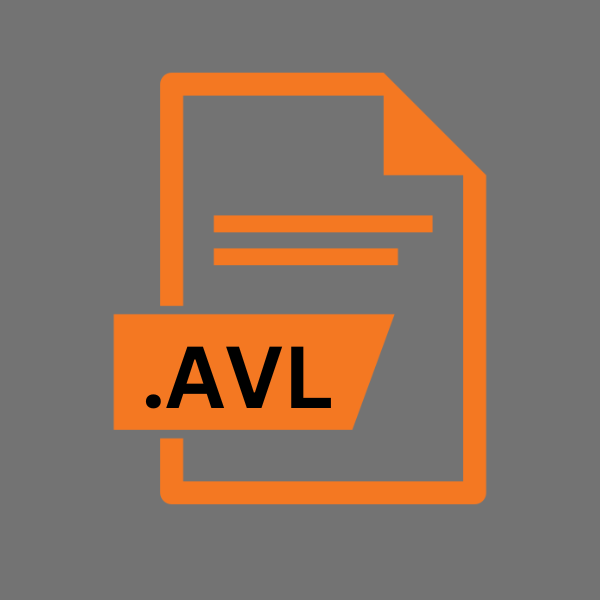.AVL File Extension

What is an AVL file?
.AVL files, also known as ArcView Legend Files, serve a pivotal role in GIS mapping and analysis. They contain crucial information about the symbology, classification, and representation of spatial data within ArcView projects.
Essentially, .AVL files act as blueprints guiding the visualization of geographic features and attributes on maps generated using ArcView.
More Information.
The .AVL (ArcView Legend) file extension was introduced alongside ArcView, Esri’s pioneering Geographic Information System (GIS) software in the early 1990s.
Initially, .AVL files were designed to serve as repositories for symbology, aiding in the visualization and classification of spatial data within ArcView projects.
They played a pivotal role in enhancing the user experience by providing a standardized method for defining map legends and symbolization schemes.
Over time, .AVL files became integral components of GIS workflows, contributing to the effective analysis and interpretation of geographic information.
Origin Of This File.
The origin of .AVL files can be traced back to the inception of ArcView, which emerged in the early 1990s as a pioneering GIS software. Esri designed ArcView to provide users with a user-friendly interface for spatial data analysis and visualization.
The inclusion of .AVL files facilitated efficient management and customization of map symbology, enhancing the software’s utility for diverse applications ranging from urban planning to environmental management.
File Structure Technical Specification.
.AVL files are typically structured in a hierarchical format, comprising various elements such as symbols, colors, line styles, and classification schemes.
These elements are organized to define how different features within a GIS dataset should be represented on a map.
The technical specifications of .AVL files may vary slightly depending on the version of ArcView being used, but they generally adhere to standards set by Esri for GIS data interchange and compatibility.
How to Convert the File?
Converting .AVL (ArcView Legend) files may be necessary for various reasons, such as compatibility with different GIS software or specific project requirements. Here’s a guide on how to convert .AVL files:
1. Using ArcGIS (Windows, macOS):
- Open ArcGIS: Launch ArcGIS software on your Windows or macOS computer.
- Import .AVL File: Navigate to the “File” menu and select “Add Data” or “Import” option. Choose the .AVL file you want to convert.
- Export to Desired Format: Once the .AVL file is loaded, you can export it to various formats such as shapefile, KML, GeoJSON, etc., using the export functionalities provided within ArcGIS.
2. Using QGIS (Windows, macOS, Linux):
- Open QGIS: Launch QGIS, the open-source GIS software, on your Windows, macOS, or Linux machine.
- Import .AVL File: Use the “Add Vector Layer” button to import the .AVL file into your QGIS project.
- Convert to Desired Format: Once the .AVL file is added to the project, you can right-click on the layer in the Layers panel and select “Save As…” to save it in a different format.
3. Online Conversion Tools:
- Search for Online Converters: Look for online GIS file converters that support .AVL file conversion. Websites like MyGeodata Converter, Convertio, and others may offer this service.
- Upload .AVL File: Upload your .AVL file to the online converter platform.
- Select Output Format: Choose the desired output format for conversion, such as shapefile, GeoJSON, or KML.
- Convert and Download: Initiate the conversion process, and once completed, download the converted file to your computer.
4. ArcGIS Mobile (Android, iOS):
- Install ArcGIS Mobile App: Download and install the ArcGIS mobile application from the Google Play Store (Android) or App Store (iOS) on your mobile device.
- Add .AVL File: Open the ArcGIS mobile app and add the .AVL file to your map project.
- Export or Share: Utilize the export or share functionalities within the ArcGIS mobile app to save the map data in a different format compatible with mobile devices or desktop GIS software.
Advantages And Disadvantages.
Advantage:
- Customization: .AVL files offer extensive customization options, allowing users to tailor map symbology to their specific requirements.
- Consistency: By defining symbology in a separate file, .AVL files ensure consistency across multiple maps and projects.
- Interoperability: ArcView’s widespread usage ensures interoperability with other GIS software, enabling seamless exchange of .AVL files between different platforms.
Disadvantage:
- Dependency on ArcView: .AVL files are primarily compatible with ArcView, limiting their usability outside of this software ecosystem.
- Complexity: Managing and editing .AVL files may require a certain level of expertise in GIS software, posing a barrier to novice users.
- Version Compatibility: Compatibility issues may arise when .AVL files created in older versions of ArcView are opened in newer versions, necessitating adjustments or conversions.
How to Open AVL?
Open In Windows
- Use ArcGIS software to directly open and work with .AVL files.
- Alternatively, utilize QGIS, another GIS software available for Windows, which supports .AVL file import and manipulation.
Open In Linux
QGIS is available for Linux and offers support for .AVL files, allowing users to open and handle them within the software.
Open In MAC
- ArcGIS for Mac is compatible with macOS, providing the ability to open and process .AVL files seamlessly.
- QGIS, which also supports macOS, can be used to open and work with .AVL files on Mac computers.
Open In Android
Install the ArcGIS mobile application from the Google Play Store on your Android device. The app allows users to open and view .AVL files on mobile devices.
Open In IOS
Download the ArcGIS mobile application from the App Store on your iOS device. Similar to the Android version, the iOS app enables users to open and interact with .AVL files on iPhones and iPads.
Open in Others
- Utilize online GIS platforms or converters that support .AVL file compatibility to access and manipulate .AVL files on various platforms.
- Some specialized GIS software available for specific platforms may also offer support for .AVL files, so it’s worth exploring options tailored to your needs.













